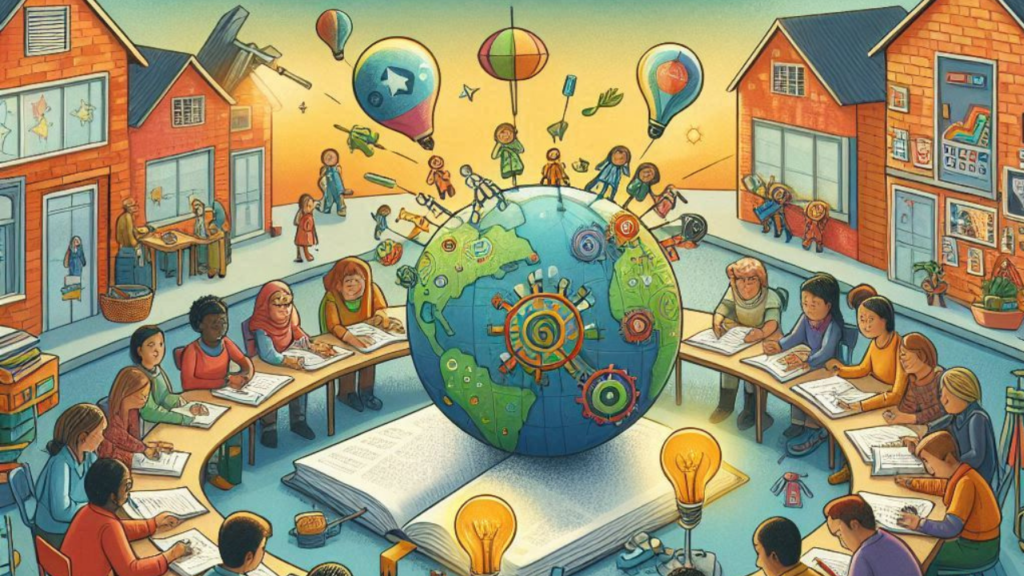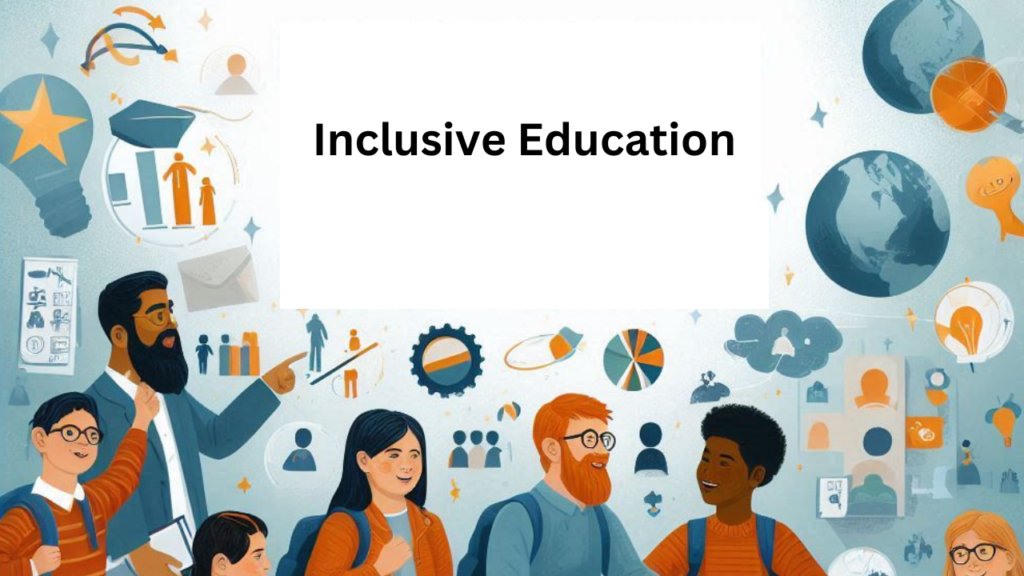Advancing Inclusive Education: Innovative Practices for Supporting Diverse Learners in Mainstream Classrooms
Inclusive education is a vital component of modern education systems, ensuring that all students, regardless of their abilities or backgrounds, receive quality education in mainstream classrooms. This approach not only promotes social cohesion but also enhances academic performance and the overall well-being of students. To achieve this, educators and policymakers must adopt innovative practices that cater to diverse learners. This article explores the latest strategies and practices to ensure inclusive education, including implementing Universal Design for Learning (UDL), effective use of assistive technologies, training educators, collaborative approaches, case studies, policy advancements, and measuring the impact on student outcomes.

Implementing Universal Design for Learning (UDL)
Universal Design for Learning (UDL) is a framework that aims to create inclusive learning environments by providing multiple means of representation, expression, and engagement for students. This approach ensures that all students have equal opportunities to learn and participate, regardless of their abilities or backgrounds. UDL involves designing lessons that incorporate various teaching methods, multimedia resources, and technology tools to cater to diverse learning styles.
Effective Use of Assistive Technologies
Assistive technologies play a crucial role in supporting students with disabilities in mainstream classrooms. These technologies can include text-to-speech software, speech-to-text software, and other tools that enhance communication and learning for students with disabilities. Effective use of assistive technologies requires educators to be familiar with the available tools and to integrate them seamlessly into their teaching practices.
Training Educators for Inclusive Teaching Methods and Cultural Competence
Educators are the backbone of inclusive education. To ensure that all students receive quality education, educators must be trained in inclusive teaching methods and cultural competence. This training should cover topics such as differentiated instruction, universal design for learning, and cultural sensitivity. Additionally, educators should be encouraged to share their experiences and best practices to foster a collaborative learning environment.
Training educators for inclusive teaching methods involves several key components to ensure that all students, regardless of their backgrounds or abilities, receive quality education. These components include:
- Developing Intrapersonal and Interpersonal Awareness: Educators need to cultivate self-awareness to identify personal biases and prejudices that may affect their teaching. Additionally, they should enhance their interpersonal skills to effectively communicate and collaborate with students, parents, and colleagues.
- Regular Curriculum Review: Educators should regularly review their curriculum to ensure it is inclusive and caters to diverse learning styles and needs. This involves updating materials, assessments, and teaching methods to accommodate all students effectively.
- Knowledge of Inclusive Practices: Educators must be knowledgeable about inclusive teaching practices, including Universal Design for Learning (UDL), differentiated instruction, and cultural competence. This knowledge enables them to create inclusive learning environments that support all students.
- Understanding Student Identities and Backgrounds: Educators should consider how student identities, ideologies, and backgrounds influence their engagement and learning. By recognizing and understanding these factors, educators can tailor their approaches to meet the diverse needs of their students.
- Encouraging Full Participation: Educators need to create a classroom climate where all students are encouraged to participate. This involves establishing ground rules for discussions, promoting respectful interactions, and providing opportunities for all students to engage actively in learning.
- Implementing Universal Design Principles: Educators can benefit from incorporating Universal Design for Learning (UDL) principles into their teaching. UDL helps present information in multiple formats to accommodate diverse learning preferences and ensure equal access for all students.
- Soliciting Student Feedback: Gathering feedback from students through surveys and evaluations allows educators to assess the effectiveness of their inclusive teaching methods. This feedback helps identify areas for improvement and ensures that students feel supported and included in the learning process.

Collaborative Approaches Involving Parents, Teachers, and Specialists
Collaboration is key to successful inclusive education. Parents, teachers, and specialists must work together to ensure that students receive comprehensive support. This collaboration can involve regular meetings, shared goal-setting, and joint problem-solving to address the unique needs of each student.
Case Studies of Schools Successfully Practicing Inclusive Education
Several schools have successfully implemented inclusive education practices, resulting in improved academic performance and student outcomes. For example, the School of the Future in New York City has implemented a comprehensive UDL approach, which has led to significant improvements in student engagement and academic achievement. Similarly, the Inclusive Education Program at the University of British Columbia has developed a culturally responsive approach to inclusive education, which has enhanced student outcomes and teacher satisfaction.
Policy Advancements and Government Initiatives Promoting Inclusion
Government initiatives and policy advancements are crucial in promoting inclusive education. For instance, the Individuals with Disabilities Education Act (IDEA) in the United States requires schools to provide free and appropriate public education to students with disabilities. Similarly, the Canadian government has implemented the Inclusive Education Strategy, which aims to promote inclusive education across the country.

Challenges and Solutions in Creating an Inclusive School Culture
Creating an inclusive school culture is crucial for successful inclusive education. However, this can be challenging due to various factors such as lack of resources, inadequate training, and cultural differences. To overcome these challenges, schools must prioritize professional development, foster a culture of inclusivity, and involve parents and the community in the inclusive education process.

Measuring the Impact of Inclusive Education on Student Outcomes and Overall School Performance
Measuring the impact of inclusive education on student outcomes and overall school performance is essential to evaluate the effectiveness of these practices. This can involve tracking student academic performance, attendance, and behavioural data. Additionally, schools can conduct regular surveys and focus groups to gather feedback from students, parents, and educators.
In conclusion, advancing inclusive education requires a multifaceted approach that involves implementing UDL, effective use of assistive technologies, training educators, collaborative approaches, case studies, policy advancements, and measuring the impact on student outcomes. By adopting these innovative practices, educators and policymakers can create inclusive learning environments that cater to diverse learners, ultimately enhancing academic performance and the overall well-being of students.
More Articles
- Revolutionizing E-Learning: Harnessing AI and Machine Learning for Personalized Education
- Mastering Blended Learning: Harmonizing Horizons for Unparalleled Student Success
- Empowering Learners in Distance Education: Unleashing Engagement in Digital Classrooms
- Closing the Gender Gap in STEM Education: Effective Strategies for Promoting Diversity and Inclusion
- “Transforming Educational Technology: Enhancing Immersive Learning with Virtual and Augmented Reality”

